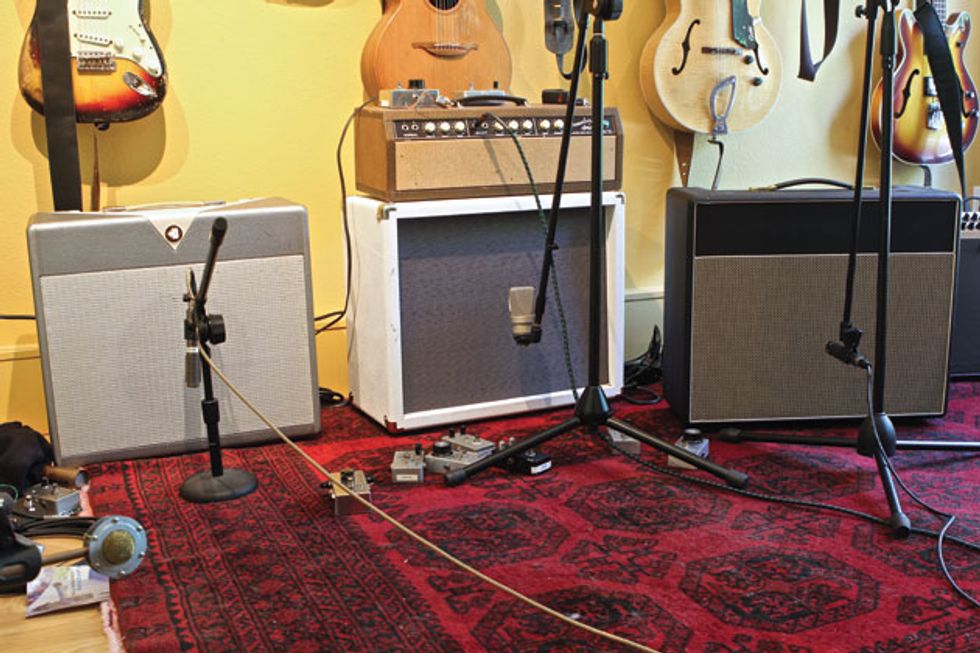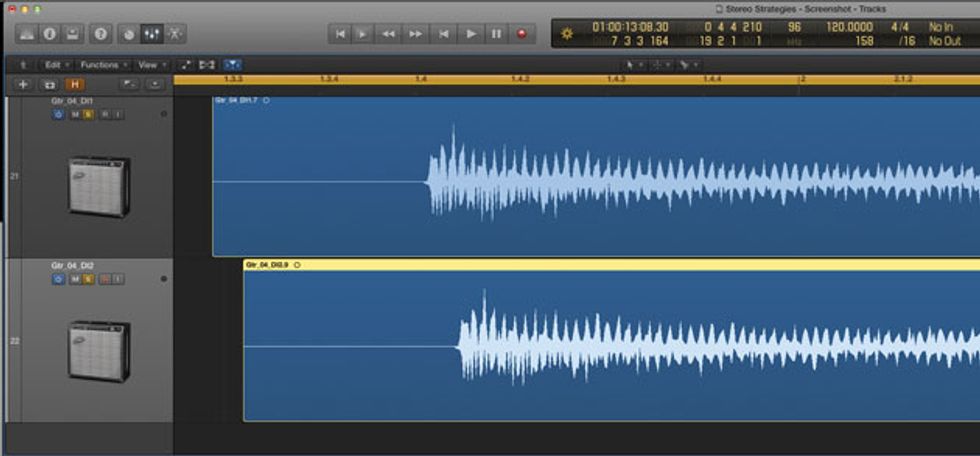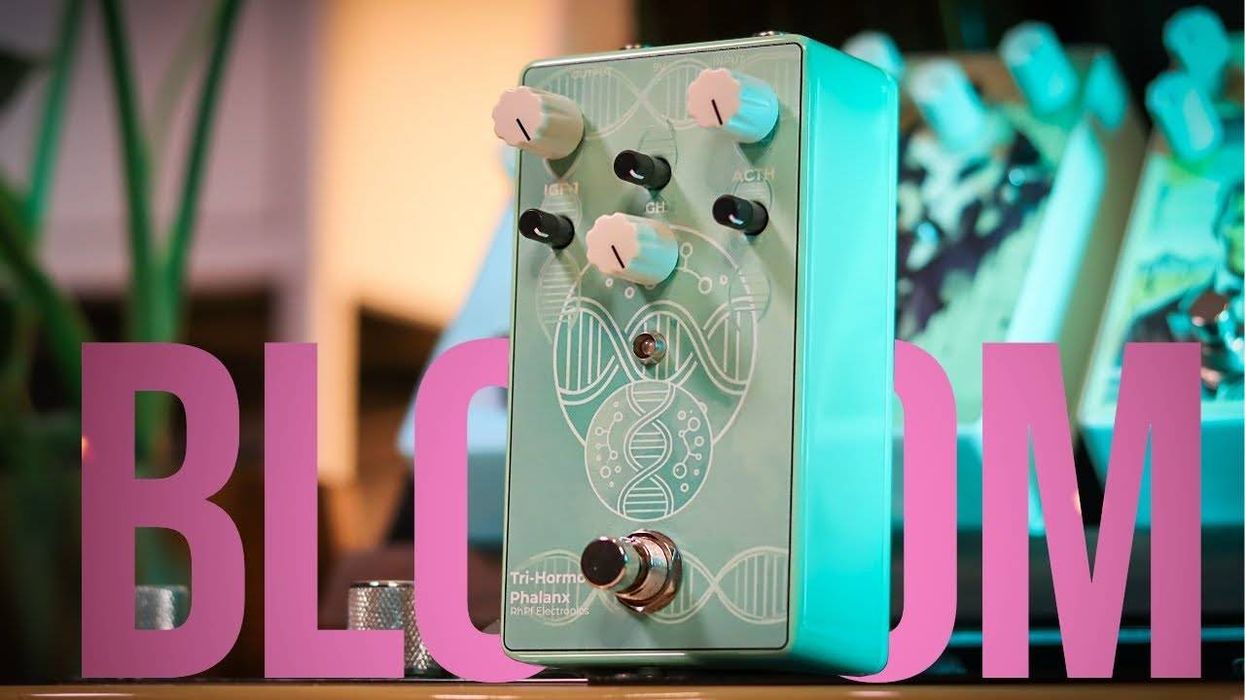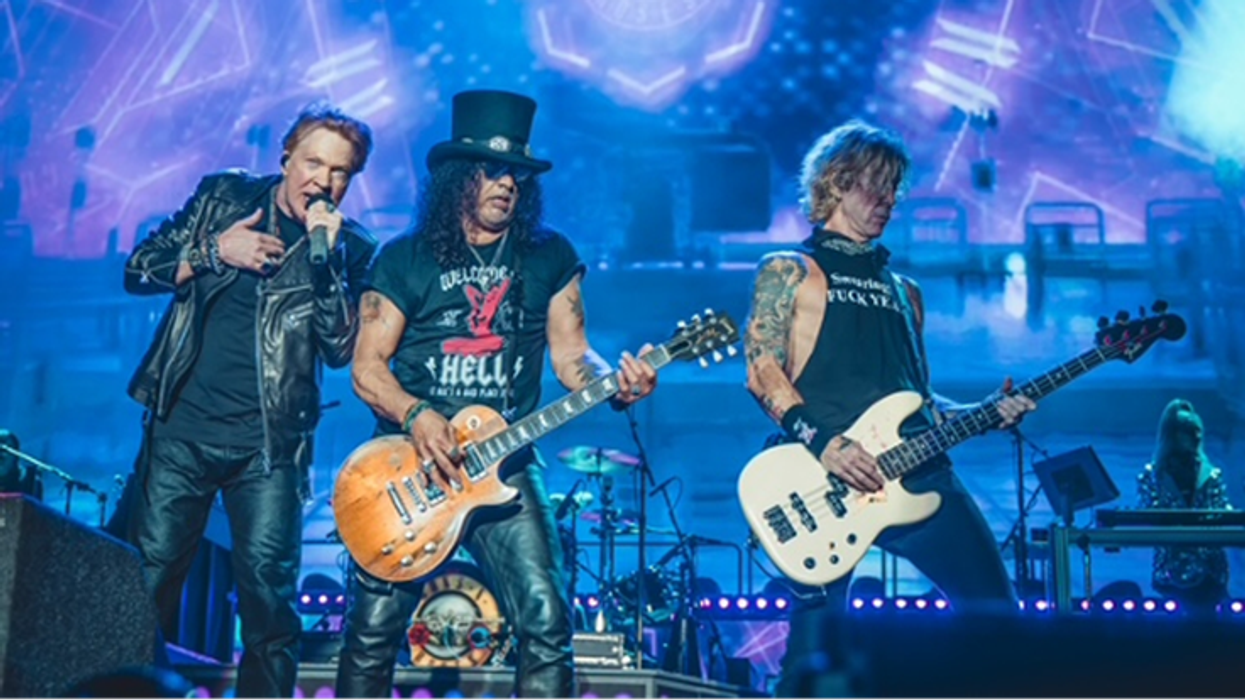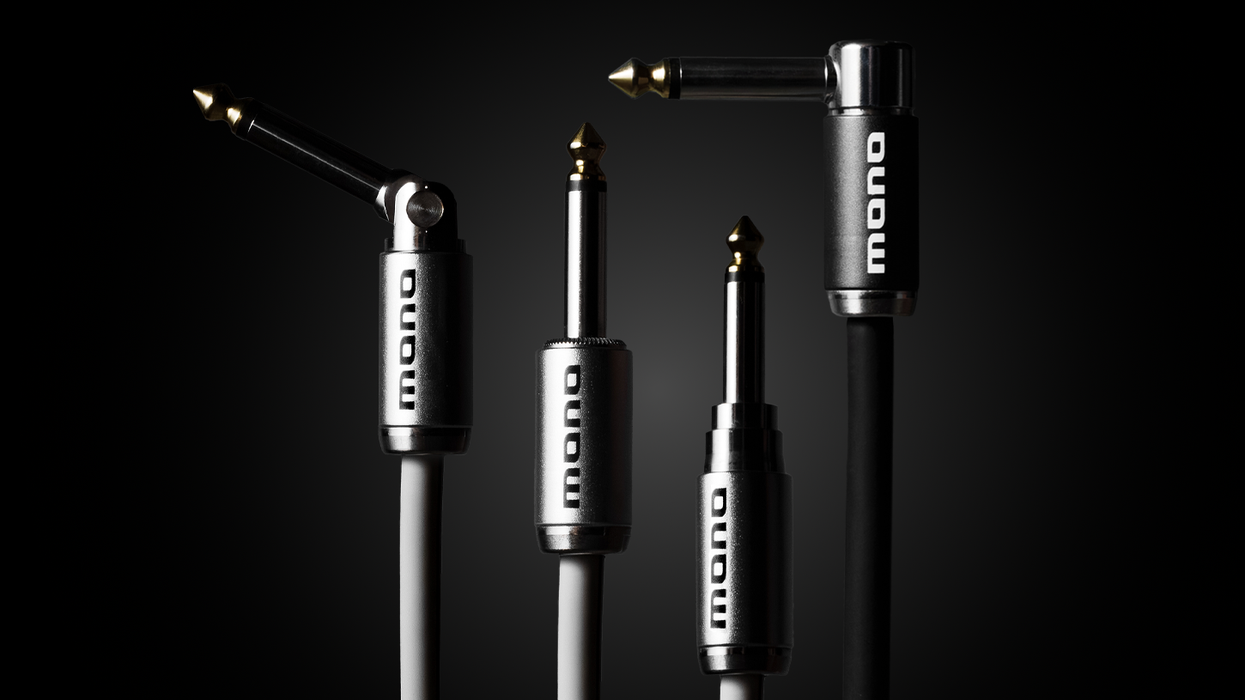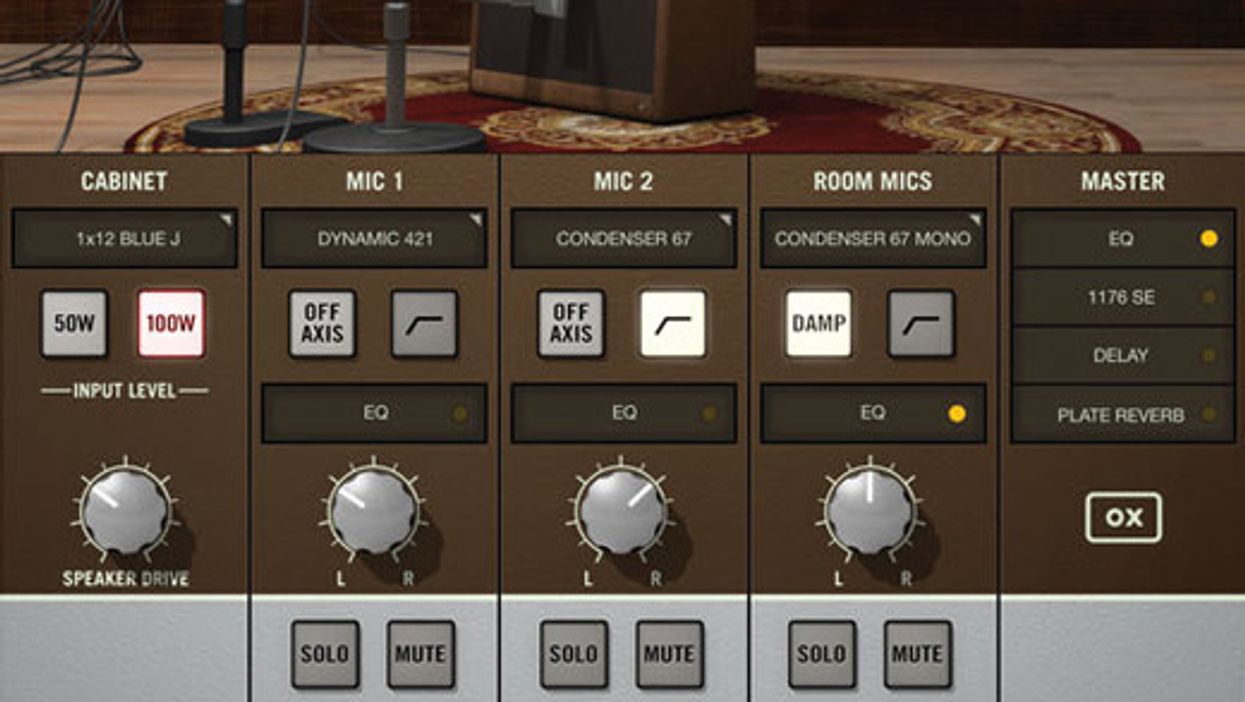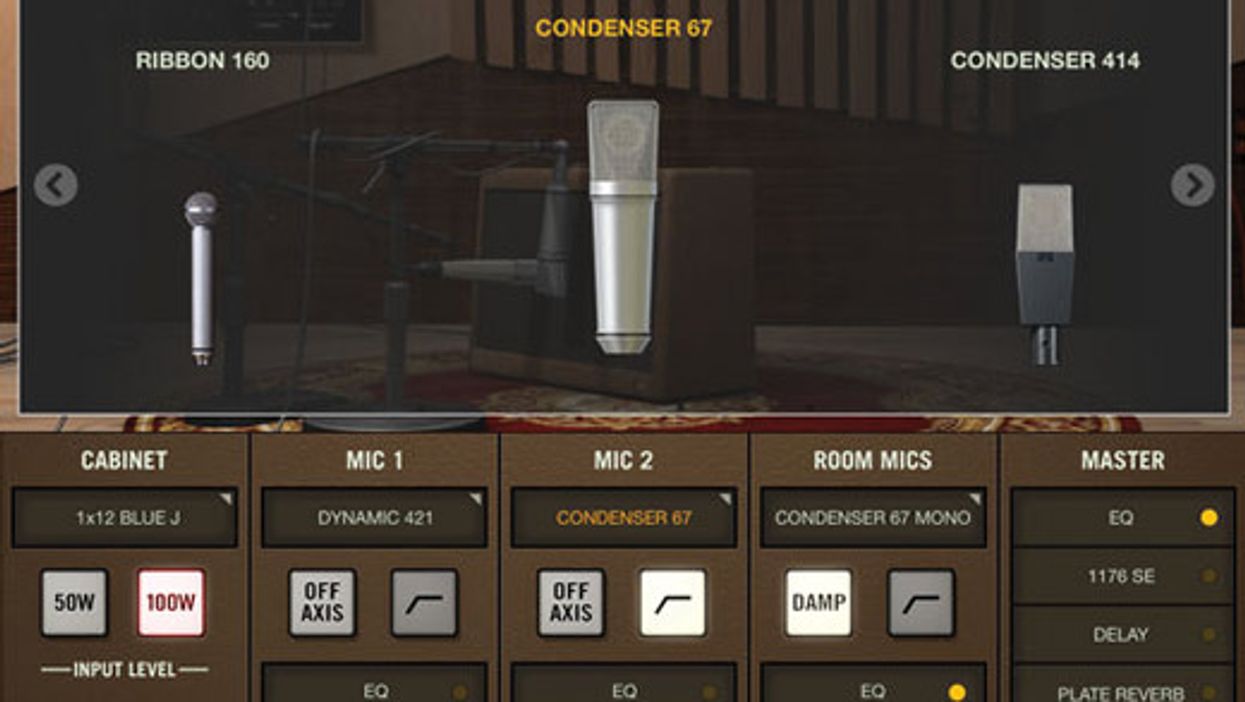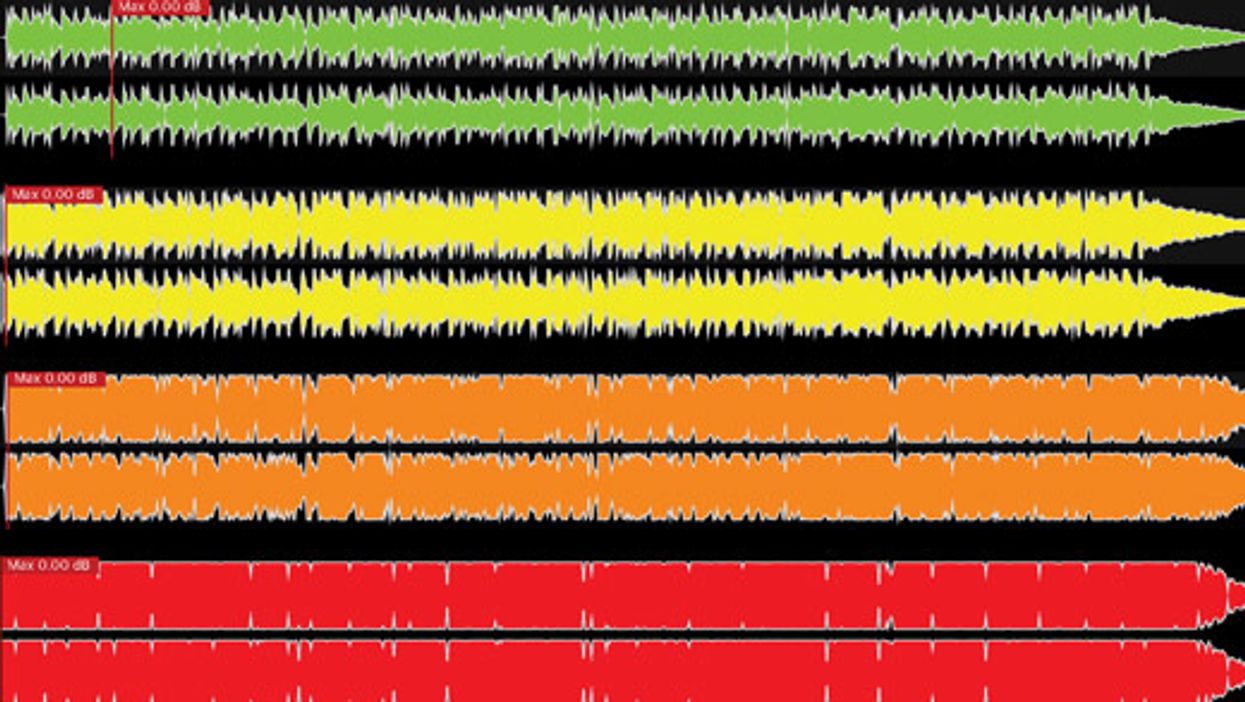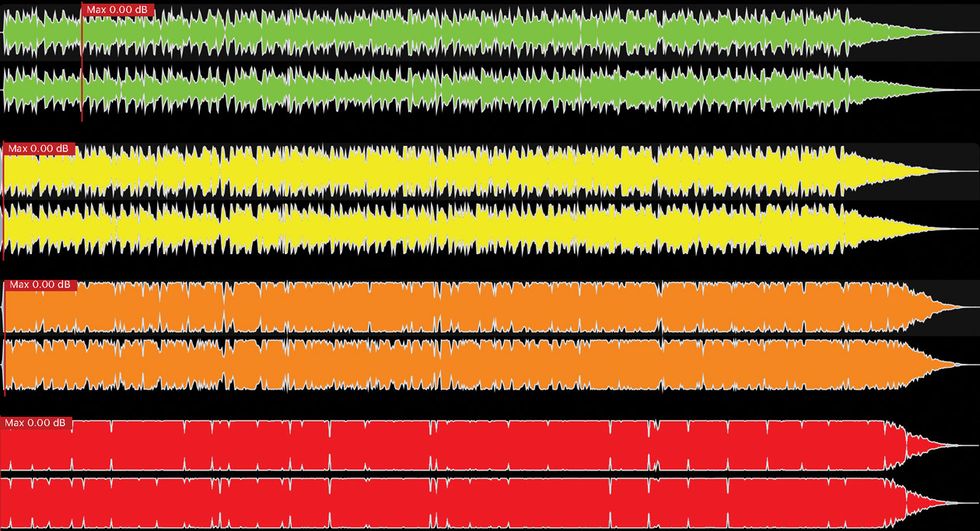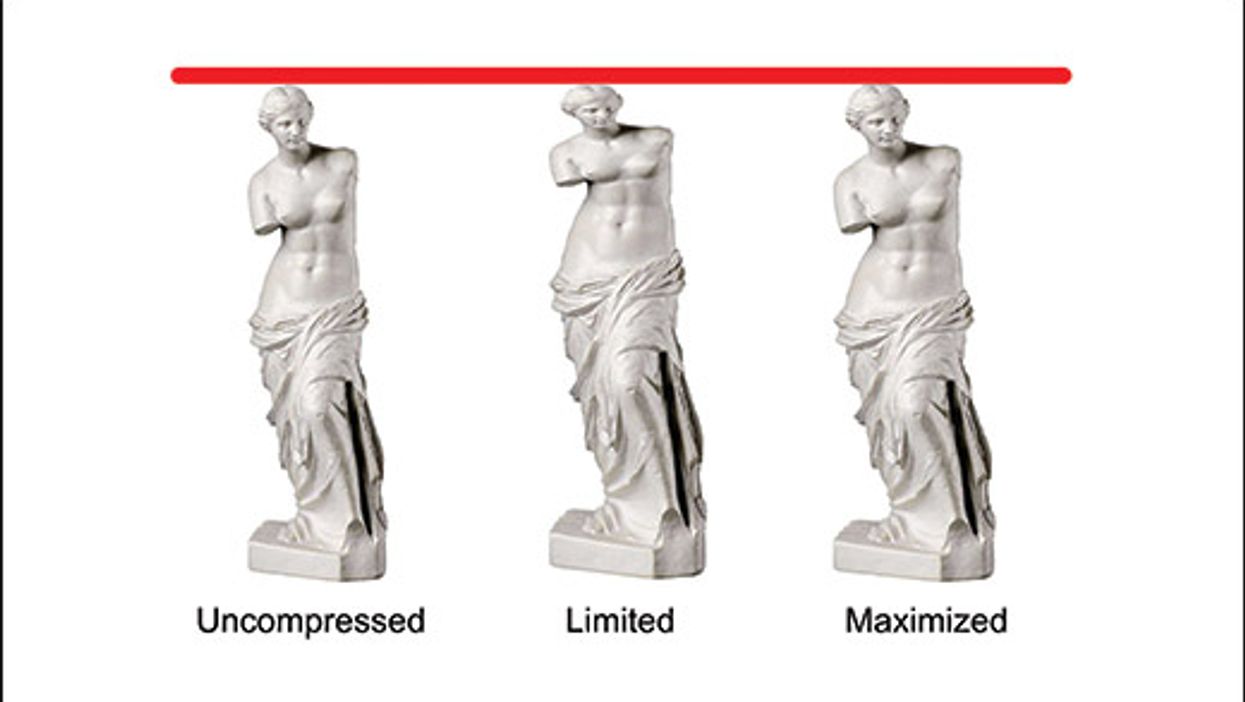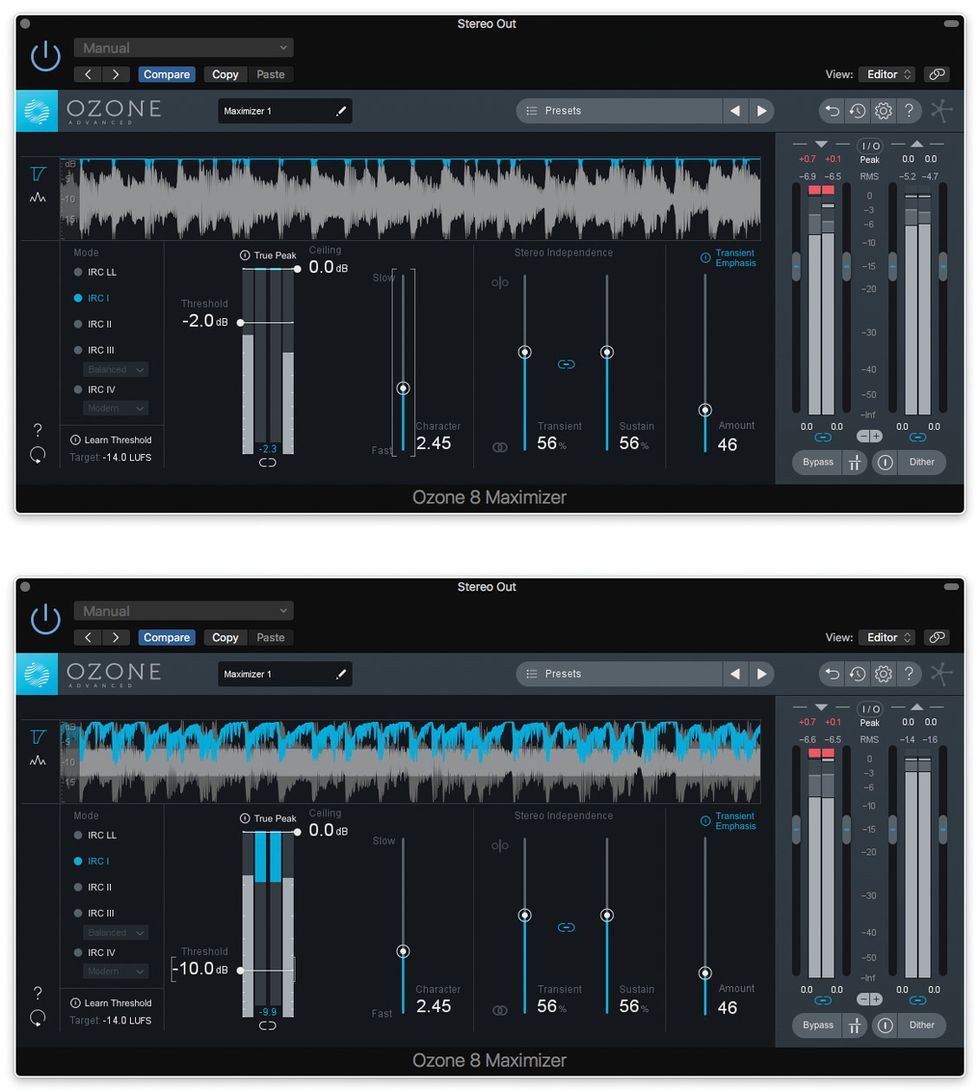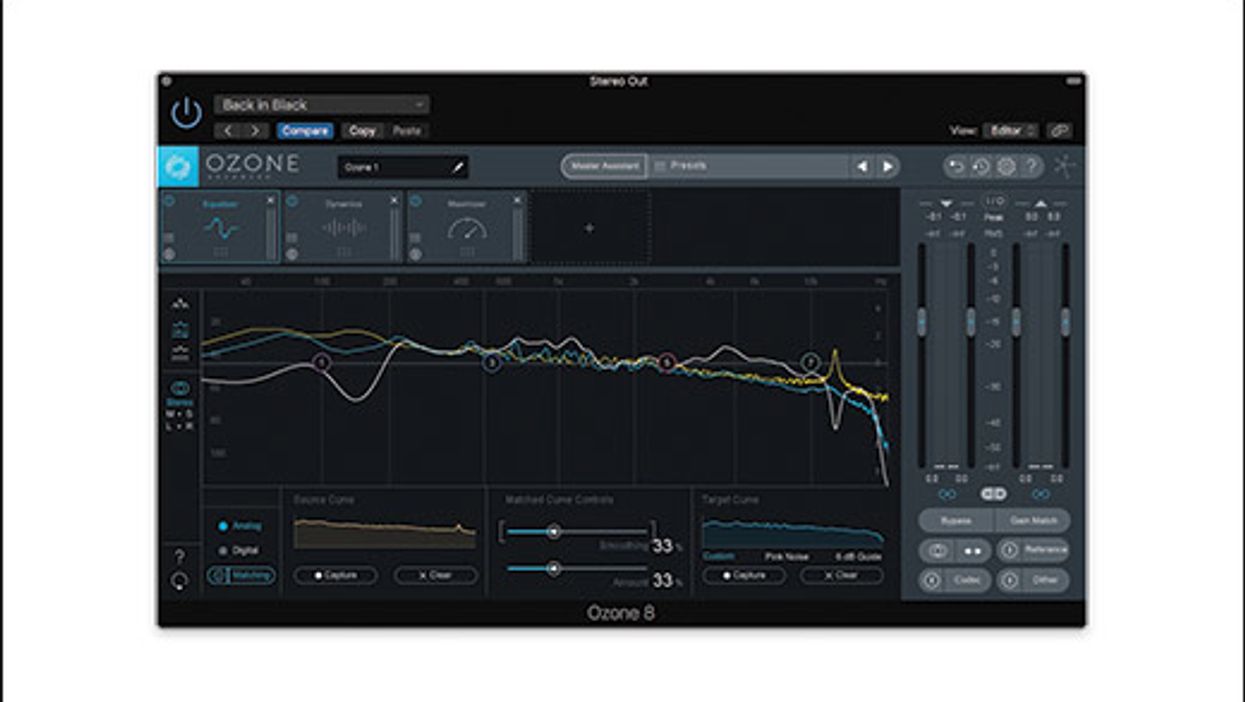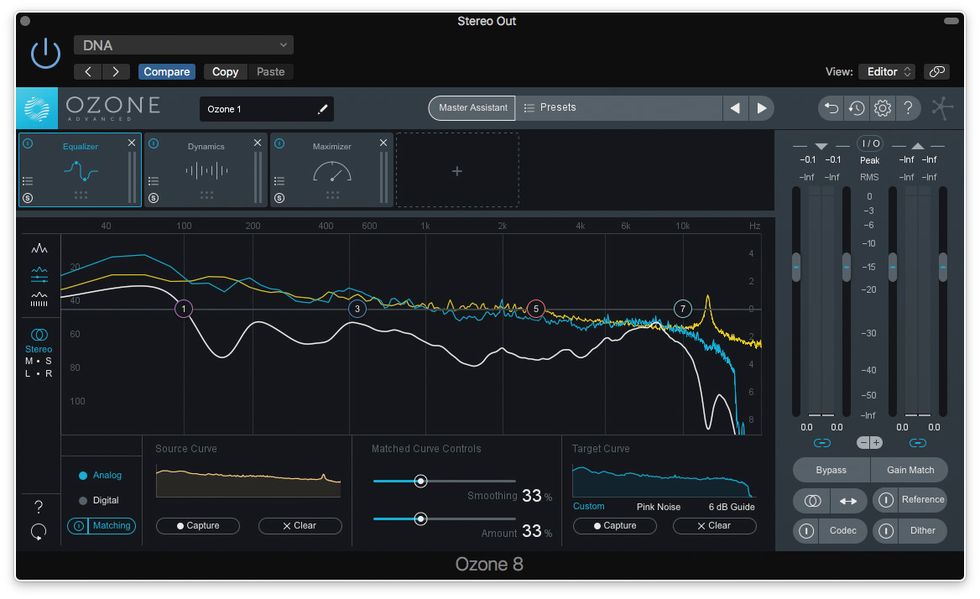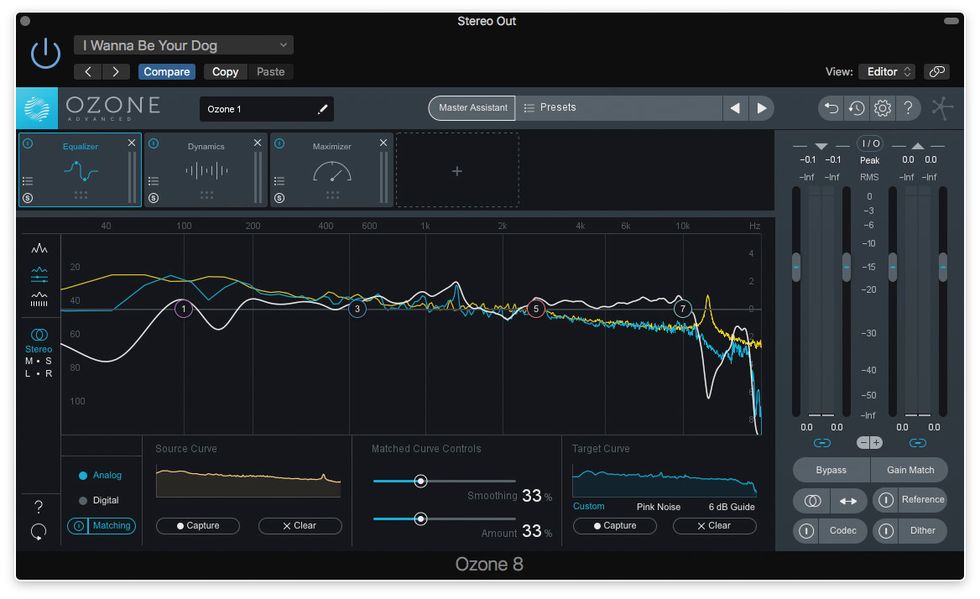It’s no secret that the massive sounds of our favorite riffs often result from replicating a part across multiple tracks. But that technique raises countless questions:
· What’s more effective: capturing a single performance with multiple mics/amps, or doubling it with multiple performances?
· If doubling a part makes it sound bigger, is it even better to quadruple—or octuple?
· Should the tracks be panned wide to fill the stereo soundstage, or positioned close together to better mimic a single instrument?
· Do added effects heighten the impact, or just muddy the waters?
Oh, you already know the answer: It depends.
THE END.
Oh, still here? Dang—thought I could get off easy this month. Naturally, musical context dictates the best approach. But you stand a better chance of recognizing it if you can envision each option. With that goal in mind, I borrowed some tracks from my brilliant bandmate, drummer Dawn Richardson. I added a bass part, improvised a riff, and started layering.
Track 1a is a rough mix of drums and bass alone, and Track 1b adds a single guitar track, panned dead center.
Okay, not a riff for the ages, but it’ll do. I recorded directly into Logic Pro, but ran the signal from my DAW to an amp using a ReAmp—the “reverse direct box” invented by John Cuniberti, Joe Satriani’s longtime engineer. These days Radial licenses the circuit and includes it in such products as the $99 Radial ProPMP. With a ReAmp you can send recorded tracks from your DAW to instrument-level gear such as amps and stompboxes, and then re-record the results. It’s one of best purchases a recording guitarist can make.
The Track 1b version, routed through a funky homemade germanium overdrive and a Kennedy-era Fender Tremolux, doesn’t sound bad, exactly, but it feels “smaller than life.” The upper mids are overbearing, though they might sit better if they weren’t panned center, near the midrange-y snare.
Via the magic of ReAmping, I re-recorded the riff, this time sending it to two individually miked amps. Track 2a has both parts panned together, but slightly to one side, away from the snare. Track 2b has a slight stereo spread, and Track 2c pans them far left and right. Track 2d adds a third track just left of center, and Track 2e is similar, but with the left/right tracks much quieter. (It may help to listen on headphones.)
Which choice is best? Duh—it depends!
Track 2a has a nice bluntness. Track 2c sounds fullest, but without a strong musical object in the center of the stereo field, it’s like a frame with no picture, though it might sound good surrounding a vocal. Track 2d works better as an instrumental, and 2e is a compromise that feels like a single track, but carries more weight than the original Track 1b.
Phase for days. When you double tracks, be mindful of phasing issues. There’s not much of a science to it, or at least, there doesn’t have to be: Just flip the phase-reverse switch on one of your doubled tracks. Sometimes one option sounds clearly superior, and sometimes it’s a toss-up. (Analog mixer channels almost always have a dedicated phase switch, but on a DAW, you may need to search for the function among the plug-ins. In Logic Pro, for example, there’s phase-reverse button within the Gain plug-in.)
Don’t be surprised if you need to turn guitar tracks down as you pan them left and right. A track that’s barely audible when fighting for attention in the center of the stereo field can be overbearing when shunted to one side.
Digital deception. So far, we’ve heard only one guitar performance, just routed through multiple amps. Before we move on to actual doubling, let’s explore a lazier option: faking doubles within your DAW.
Sometimes it’s effective to record a single guitar performance through multiple amps, either simultaneously, or one at a time via a ReAmp. Left to right: Divided by 13 CJ 11 with Royer R-121 ribbon mic, brownface Fender Tremolux and custom cab with Neumann TLM 103 condenser mic, and Marshall 18-watt clone with Shure SM57 dynamic mic.
I returned to the original one-amp version, only this time I copied the recording to a separate track. For Track 3 I nudged one audio region slightly ahead, and then panned the two tracks in stereo. The gap between them (about 1,000 samples) is too short to be perceived as a delay, yet it creates a strong, if tiresome, stereo image.
If you modulate one of the tracks, you get chorusing/phasing, as in Track 3b. Not a bad sound, necessarily, but it gets old fast. Track 3c is hipper to my ear. I added gobs of trashy spring reverb to the duplicate track, lowered the level, and panned it far left, with the original, drier sound at around 2 o’clock. (You can get a similar effect by miking both a dry amp and one with heavy reverb.)
Real doubling. Now let’s look at doubling the old-fashioned way: Playing the damn part more than once!
Consider these options: In Track 4a, I’ve replayed the riff part through the original Fender amp, and combined the two performances, panned wide. This approach instantly creates more complex and volatile stereo animation. Your ear ricochets from speaker to speaker, registering the subtle differences between the performances. (There are always differences, no matter how tight the playing.) Track 4b is similar, but with a different amp (a Fender-like Divided by 13 combo) on the double. Track 4c swaps the Divided by 13 for a Marshall 18-watt clone. And Track 4d has all three amps, plus I’ve added in the heavy-reverb part from Track 3c, but only in the last four bars for that extra push over the cliff. (Do I even need to mention that varying the number of doubles over the course of a song is a good way to add variety and heighten dynamics?)
Lazy-ass doubling: Duplicate a track, slide the duplicate forward a few milliseconds, and pan the two tracks apart,
as seen here in Logic Pro.
Overdub overkill. So what’s the ideal number of overdubs before you reach the point of diminishing returns? That’s easy—three! Or at least that’s what Scott Ian from Anthrax once told me, and the dude knows a thing or two about doubling fat riffs. But the real answer is—wait for it—it depends. Even with tight performances, definition starts to blur with more than three or four doubles. There are exceptions, though, like the 97 jillion doubles producer Chris Thomas used to create the wall of power-chord sludge on the Sex Pistols’ Never Mind the Bollocks. Steve Jones was the never the most precise of players, and those guitars are a bloody mess. A bloody good mess.
So in honor of Jonesy, here are few over-the-top overdubs, starting where Track 4d left off.
Track 5a adds three additional channels of guitar, generated from the original performance, but ReAmped through multiple amps. Track 5b also features six tracks (seven after the reverb part enters), but these are honest-to-goodness doubles, performed separately, but all through the same amp. Track 5c is similar, but with a mix of analog amps. Track 5d adds three additional tracks of modeled amps. Track 5e is the full Monty: 18 tracks of analog guitar (six separate performances through three amps each), plus three tracks of modeled amps. And Track 5f provides some much needed perspective: We’re back to one guitar and one amp in mono.
Of the 18 versions, which sucks least? Say it with me, people! It depends. And remember, I recorded all tracks with a single guitar (a korina Jazzmaster with P-90s assembled from Warmoth parts). We didn’t even consider the dimension that multiple guitars can add. Why not experiment on your own this month? If you take five minutes per overdub, you can layer 7,440 parts before next issue.
And oh—did you notice a big difference in quality when I started adding virtual amps to the mix? Me neither. We’ll revisit to that topic very soon. Bwa-ha-ha.

